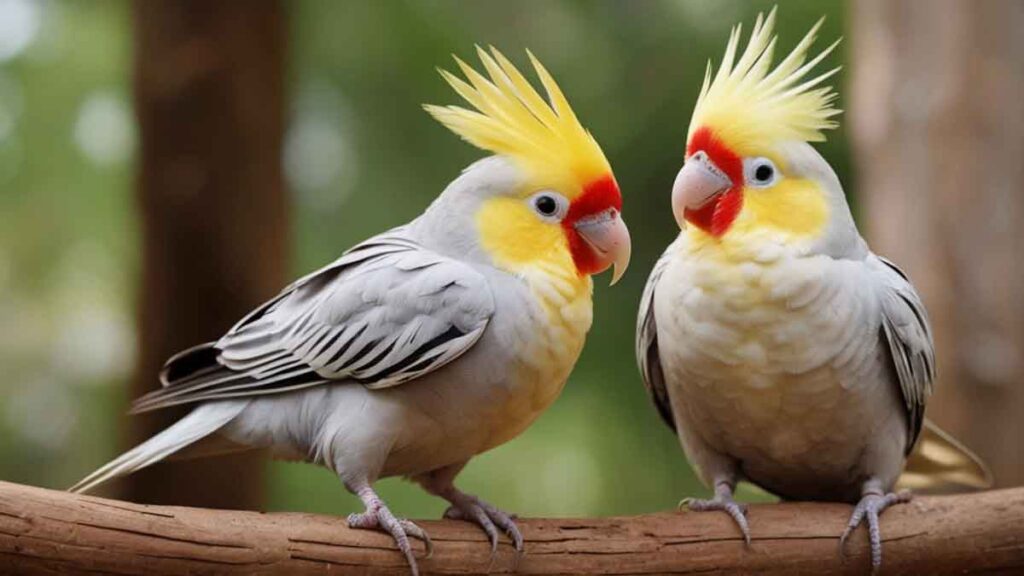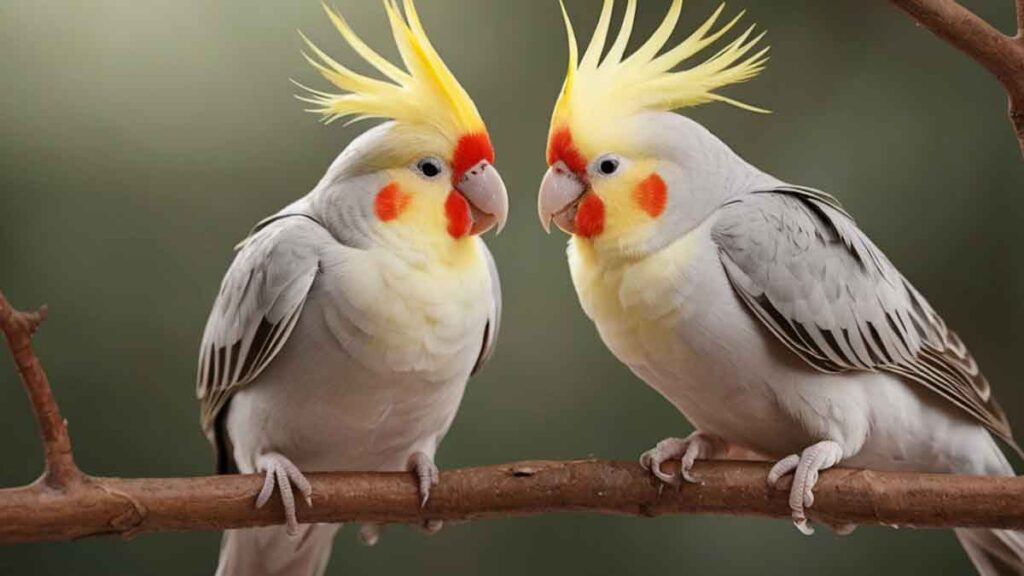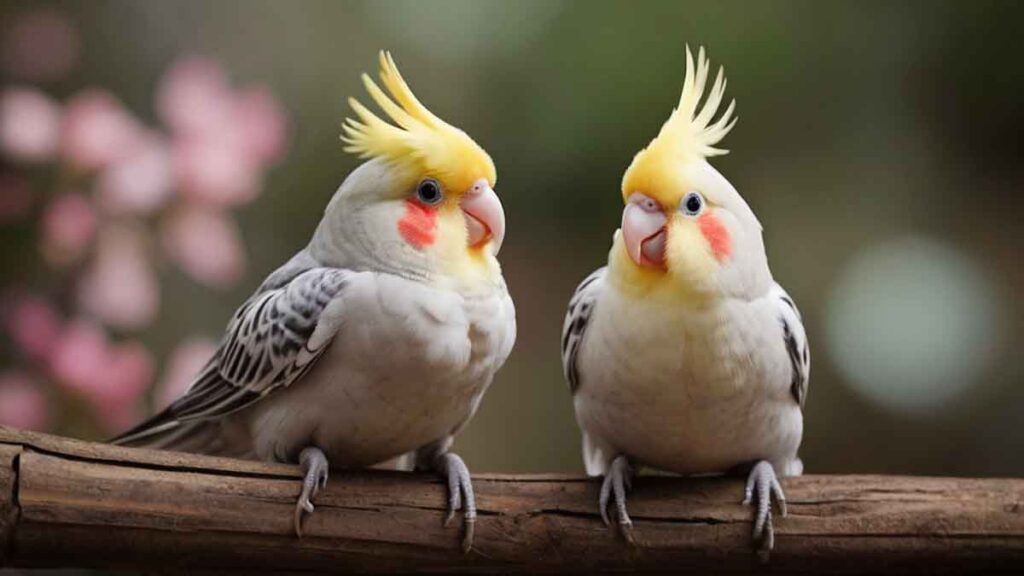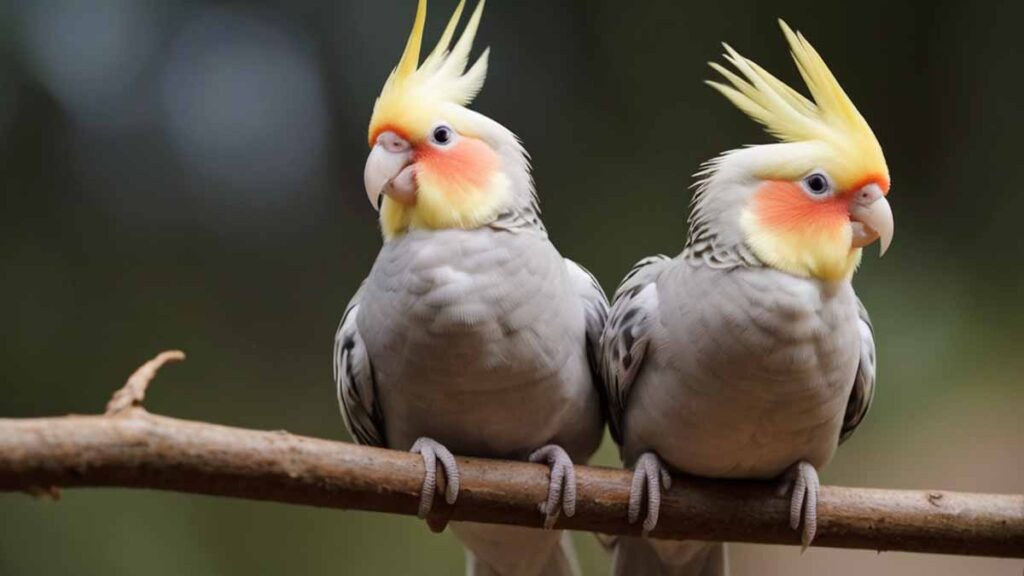Cockatiels do not mate for life; they choose new mates every breeding season. However, they are social birds and thrive in the company of other birds.
1. Cockatiel Social Behavior
Cockatiels are social birds with fascinating mating behavior. They form strong bonds with their partners, often staying together for life. Understanding cockatiel social behavior is crucial to understanding their mating habits.
Cockatiels Are Social Birds With Fascinating Mating Behavior
Cockatiels are highly social birds that thrive in the company of others. They are known to form close-knit flocks in the wild, and this social behavior extends to their mating habits. Cockatiels are known to be monogamous and typically mate for life, although there are some exceptions to this rule.
In the wild, cockatiels choose their partners and stay together for the long term. This bonding process involves various displays of affection, such as preening each other’s feathers and engaging in courtship rituals. These behaviors help strengthen the bond between the pair and ensure a successful breeding season.
They Form Strong Bonds With Their Partners
When cockatiels form a bond, they become highly dependent on each other for companionship and emotional support. They engage in mutual grooming, share food, and even sleep side by side. This strong bond is essential for successful mating and raising offspring.
However, it’s important to note that not all cockatiels mate for life. Some individuals may choose to find a new partner each breeding season, while others may bond with multiple partners throughout their lives. This variability in mating behavior highlights the complex nature of cockatiel social structures.
Understanding Cockatiel Social Behavior Is Crucial To Understanding Their Mating Habits
To fully comprehend the mating habits of cockatiels, it is essential to have a deep understanding of their social behavior. Observing their interactions within a flock or cage setting allows one to identify potential pairs and predict their mating behavior.
Cockatiels are highly intelligent and social creatures that require ample socialization and mental stimulation. Providing them with a suitable environment, appropriate companionship, and a balanced diet can significantly enhance their overall well-being and increase their chances of successful breeding.
By delving into the complexities of cockatiel social behavior, we can gain a deeper appreciation for these remarkable avian companions and ensure their needs are met for a fulfilling life.

Credit: leonardo.ai
2. Bonding And Pairing
Cockatiels are known for their strong bonding and pairing habits when forming relationships. They are one of the birds observed to mate for life. This means that once a pair of cockatiels forms a bond, they are likely to stay together for their lives. Let’s explore the process of bonding and pairing in more detail.
Cockatiels Often Mate For Life
Yes, you heard it right. Cockatiels tend to choose a partner and stick with them for life. This strong bond is formed through various behaviors and communication between the male and female birds. Once they find a suitable mate, they go through a courtship period, which involves displaying their feathers, singing, and dancing to impress each other. This courtship ritual strengthens their bond and prepares them for a lifelong commitment.
The Process Of Bonding And Pairing Between Cockatiels
The bonding process between cockatiels starts with mutual grooming, where they preen each other’s feathers, strengthening their emotional connection. This grooming behavior is a form of trust and affection between the pair. They also indulge in activities like sharing food and nesting together, further deepening their bond.
Communication is essential for cockatiels to establish a strong bond. They use vocalizations and body language to convey their feelings to their partner. This includes whistling, chirping, and mimicking sounds. They develop a unique language they only understand through these interactions, enhancing their emotional connection.
Factors That Influence Bonding And Pairing In Cockatiels
Several factors can influence the bonding and pairing habits of cockatiels. One crucial factor is age. Cockatiels tend to form stronger bonds and pairings when they are introduced to each other at a young age. This allows them to grow and develop together, creating a more profound emotional connection.
The environment also plays a significant role in the bonding process. Providing a suitable living space with ample stimulation and enrichment encourages cockatiels to bond with their partners. Creating a calm and stress-free environment is vital for their emotional well-being and helps foster a stronger bond.
Lastly, compatibility between individuals is crucial for successful pair bonding. Cockatiels have their personalities, and finding two birds that complement each other’s temperaments can lead to a more harmonious and long-lasting partnership.
In conclusion, cockatiels exceptionally form lifelong bonds with their chosen mates. Understanding the bonding process and the factors that influence it can aid in creating a nurturing environment for these beautiful birds. Whether you have a single cockatiel or are considering introducing a partner, knowing their bonds are built on trust, affection, and mutual understanding can bring joy and fulfillment to you and your feathered companions.
3. Mating Rituals And Courtship Display
Detailed Description Of The Courtship Rituals Of Cockatiels.
Cockatiels are known for their fascinating courtship rituals, which are intricate and mesmerizing. During the courtship period, which typically occurs in the breeding season, male cockatiels will engage in various behaviors to attract the attention of potential mates. One of the most prominent courtship displays is the male’s head crest. When a male cockatiel is interested in a female, he raises his crest and spreads his wings slightly to appear more significant and impressive.
The Significance Of Courtship Display In Cockatiel Mating.
The courtship display plays a crucial role in cockatiel mating, as it allows potential mates to assess the quality and suitability of a partner. The head crest and wing spreading are visual signals that indicate the male’s interest and readiness for mating. Additionally, male cockatiels often sing and chirp in elaborate melodies to attract females and demonstrate their vocal prowess. These songs serve as a way to communicate their intentions and showcase their health, vigor, and genetic fitness.
Observing And Interpreting Cockatiel Mating Behaviors.
Observing and interpreting cockatiel mating behaviors can provide valuable insights into their reproductive cycles and overall well-being. Some common behaviors to look out for include courtship rituals such as crest raising, wing spreading, and singing. Additionally, males may perform “sneak copulation” attempts, trying to mate with a female without her consent. Observing the interactions between male and female cockatiels closely is essential to understanding their compatibility and reproductive readiness level.
Table: Common Cockatiel Mating Behaviors
| Behavior | Description |
|---|---|
| Crest Raising | The male raises his head crest to appear more attractive to potential mates. |
| Wing Spreading | The male slightly spreads his wings to display his size and strength. |
| Singing | Males sing and chirp in elaborate melodies to attract females. |
| Sneak Copulation | Males attempt to mate with females without their consent. |
By closely observing these behaviors, you can gain valuable insights into your cockatiels’ mating preferences and readiness. However, it is essential to remember that each bird has a unique personality and preferences, so not all cockatiels may display the same behaviors during courtship.

Credit: leonardo.ai
4. Family Dynamics And Parenting
Regarding family dynamics and parenting, cockatiels exhibit exciting behaviors that contribute to their lifelong mating bonds. Understanding the roles of male and female cockatiels in parenting, their nesting behaviors, and raising offspring can provide fascinating insights into their family dynamics.
The Role Of Male And Female Cockatiels In Parenting
Male and female cockatiels share responsibilities when it comes to parenting their offspring. The male plays an active role in courtship and mating rituals, often serenading the female with elaborate songs and displays. Once the female lays eggs, both parents take on the task of incubating them.
During incubation, the male and female cockatiels take turns sitting on the eggs to regulate temperature and ensure their development. This co-parenting behavior is crucial for successfully hatching and raising the chicks.
Nesting Behaviors And The Raising Of Offspring
Cockatiels are meticulous when it comes to finding a suitable nesting site. They prefer enclosed spaces, such as tree hollows or nest boxes, where they can create a secure and cozy environment for their offspring.
Once the eggs hatch, both parents feed and care for the chicks. They regurgitate food to feed the young and provide constant attention and protection. This collaborative effort ensures the healthy growth and development of the cockatiel chicks.
How Cockatiel Family Dynamics Contribute To Lifelong Mating Bonds
Cockatiels are known for forming lifelong, solid mating bonds. Their family dynamics play a significant role in nurturing and strengthening these bonds. The shared responsibilities in parenting, such as incubating eggs and raising offspring, create a sense of unity and cooperation between the male and female cockatiels.
These shared experiences and mutual dedication to family life cement their bond and contribute to their long-term commitment to each other. This strong connection is believed to be built upon trust and successful collaboration in raising their offspring.
| Key Points: |
|---|
| Male and female cockatiels contribute to parenting responsibilities, including courtship, incubation, and feeding. |
| Cockatiels are meticulous in finding secure nesting sites and creating a nurturing environment for their offspring. Shared experiences and mutual dedication in raising offspring contribute to lifelong mating bonds between cockatiels. |
| Shared experiences and mutual dedication in raising offspring contribute to lifelong mating bonds between cockatiels. |
In conclusion, understanding cockatiels’ family dynamics and parenting behaviors sheds light on their lifelong mating bonds. The shared responsibilities and dedication of male and female cockatiels in raising their offspring contribute to the strength and longevity of their relationships. Their collaborative efforts in nesting and raising their young ones foster trust and unity, creating a solid foundation for their bond to last a lifetime.

Credit: leonardo.ai
5. Mating Challenges And Adaptations
Circumstances That May Break Mating Bonds In Cockatiels
Although known to mate for life, cockatiels sometimes experience circumstances leading to breaking their mating bonds. These circumstances include:
1. Intervention by humans: Cockatiels kept as pets may be separated or moved to different households, causing the mating bond to be broken. Human interference can disrupt their natural mating behavior.
2. Loss of habitat: Changes in their environment, such as relocation or being placed in separate cages, can cause the mating bond to weaken or break.
3. Introduction of new mates: In certain cases, cockatiels may be introduced to new potential mates, forming new bonds and breaking previous ones.
It is important to note that these factors may not always result in the permanent breakage of mating bonds. Cockatiels have shown resilience and adaptability in coping with these challenges.
The Impact Of A Mate’s Death Or Separation On A Cockatiel
When a cockatiel loses its mate, whether due to death or separation, it can significantly impact its emotional well-being; cockatiels are social birds that form strong bonds with their mates.
The loss of a mate can lead to feelings of loneliness, depression, and withdrawal. Cockatiels may display changes in behavior, such as decreased appetite and reduced interaction with humans and other birds. They may also vocalize more or exhibit signs of stress.
Cockatiels’ Ability To Adapt To New Mates Or Live As Single Birds
Despite the strong bonds formed between mates, cockatiels can adapt to new mates or live as single birds. While they may mourn the loss of a mate, they can gradually adjust to their new circumstances.
Cockatiels are capable of forming new bonds and accepting new mates over time. With proper care, attention, and socialization, they can thrive in the company of a new partner or as single birds, depending on their individual needs and preferences.
Providing ample support, affection, and mental stimulation during this transitional period is essential to help cockatiels adapt to their new situations.
In conclusion, while cockatiels are known to mate for life, various circumstances can break mating bonds. The loss of a mate can significantly impact a cockatiel’s emotional well-being, but with time and proper care, they can adapt and form new bonds or live contentedly as single birds.

Credit: leonardo.ai
Frequently Asked Questions Of Do Cockatiels Mate For Life
What Happens When A Cockatiel Loses Its Mate?
When a cockatiel loses its mate, it can become depressed, withdrawn, and eat less. Without its mate, it will depend on you for attention and interaction.
Are Cockatiels Happier In Pairs?
Cockatiels are happier in pairs as they thrive in the company of other birds. They can become depressed if they lose their mate and may require more attention from their owner. Spending time with them can help them adjust and still be comfortable with you.
Can Cockatiels Fall In Love With You?
Cockatiels can form strong bonds with their human caregivers, showing affection through long, slow eye blinks. However, they do not fall in love like humans do. Cockatiels are monogamous and can mate for life in the wild, but they also form strong attachments to their human companions.
How Often Will Cockatiels Mate?
Cockatiels do not mate for life and can mate multiple times during the breeding season. However, limiting breeding experiences to two per season is essential to allow the birds to replenish themselves.
Conclusion
Overall, cockatiels have the potential to mate for life, as they are known to form strong bonds with their chosen partners. Losing a mate can significantly impact their emotional well-being, causing them to become depressed and withdrawn.
However, cockatiels can thrive even without a mate with proper care and attention from their human companions. Ultimately, understanding and meeting the social needs of these birds is crucial for their overall happiness and well-being.







